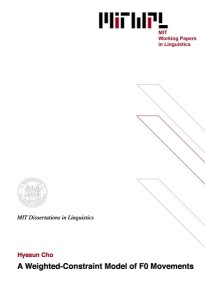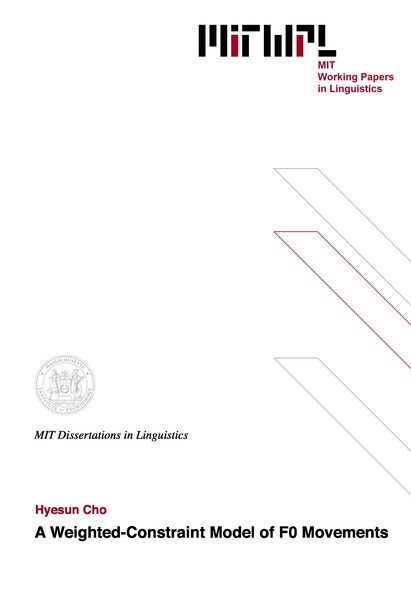A Weighted-Constraint Model of F0 Movements
Cho, Hyesun, 2010
This dissertation develops a grammar of phonetic implementation of phonologically significant F0 (pitch) events, which is applicable across languages. Through production studies of various languages, we show that phonetic universals exist which govern phonetic realization of the phonological representations of tones. In the previous literature, there have been two conflicting views concerning tonal timing: tones are aligned with respect to segments (the Segmental Anchoring Hypothesis) or tones occur at a fixed interval from other tones (the Constant Duration Hypothesis). In this dissertation, the two hypotheses are tested in languages with various tonal phonologies: Seoul Korean (phrasal boundary tone), Tokyo Japanese (lexical pitch accent), Mandarin (lexical tone), and English (intonational pitch accent). In all languages, both tendencies to maintain segmental alignment and a target duration for pitch rises are simultaneously observed. We thus adopt a weighted-constraint model (Flemming, 2001) where segmental alignment and target duration are interpreted as weighted constraints. In this model, timing of tones is determined to minimize the summed cost of violation of these conflicting constraints. Mixed-effects models were fitted to the data to obtain the actual weights in each language. Relative weights of the constraints reflect cross-linguistic differences in the alignment of tones. The relative weights of constraints in the phonetic realization grammar are not random but systematic, reflecting the phonological nature of tones in each language. The experimental studies in this dissertation show that tonal alignment patterns depend on phonological status and context of tones. Lexically-contrastive tones (Japanese accented words, Mandarin lexical tone) or prominence-lending tones (English pitch accents) are more strictly aligned with respect to their anchoring points than phrasal boundary tones (Seoul Korean, Japanese unaccented words), if other conditions are equal. Tones show different alignment patterns depending on phonological context: tones are more strictly aligned in word-final context than in word-medial context in Japanese accented words, and in lexical-tone context than in neutral-tone context in Mandarin. In addition, languages show different phonetic realization patterns depending on whether contour tones are contrastive in the language (Mandarin and English) or not (Korean and Japanese). These results point to the fact that details of phonetic realization of tones are determined by language-specific phonetic realization grammar, rather than by default universal rules.

